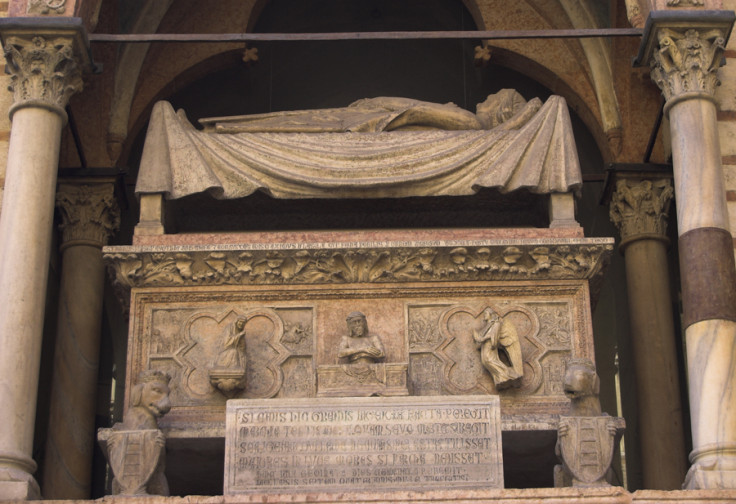Cangrande Della Scala: Murder mystery of Renaissance warlord solved using mummy poo

Researchers from the University of Pisa have solved a 700-year-old murder mystery by analysing the faeces from a mummy.
Cangrande Della Scala was a powerful and popular Italian nobleman from the Renaissance era. He was a successful warlord who became the sole ruler of Verona and also won control of Vicenza, Padua, and Treviso.
He gained the favour of Holy Roman Emperor Henry VII and was a close friend, patron and protector of the Renaissance poet Dante Alighieri.
But on 22 July, 1329, his prosperous career came to a sudden end when he died at the age of 38, mere days after arriving in Treviso, the city he had just gained control of.
Cangrande had arrived in Treviso on 18 July, 1329, and supposedly drank from a polluted spring. He experienced vomiting, diarrhoea and fever, dying just four days later.
His body was carried in state from Treviso back to Verona on a bier, escorted by nobles and 12 knights.
After being temporarily housed in the church of Santa Maria Antica in Verona, his final resting place was in a magnificent marble tomb over the church entrance.
Whispers of foul play
Throughout history there have been whispers that Cangrande might have been poisoned, so Gino Fornaciari and his team of forensic archaeologists decided to conduct a cold case criminal investigation 700 years later.

Their findings, entitled "A medieval case of digitalis poisoning: the sudden death of Cangrande della Scala, lord of verona (1291–1329)" have been published in the Journal of Archaeological Science.
On exhuming Cangrande's body, they discovered a well-preserved natural mummy in his stone sarcophagus. Giving the body a modern autopsy, they were able to gain a sample of fecal matter from inside Cangrande's rectal ampulla and analyse it.
"There is a large quantity of pollens of chamomile, black mulberry and, totally unexpected, of foxglove (Digitalis sp. perhaps purpurea) in the faeces," the researchers said in a presentation to the World Congress on Mummy Studies in 2007.
"In the Middle Ages chamomile was largely used... as a sedative and antispasmodic, and black mulberry as astringent; on the contrary foxglove was considered only a poisonous plant."
Foxglove found in his poo

In small quantities, foxglove has been used through history for medicinal purposes, and today is used as part of a treatment for congestive heart failure.
However, if any of the plant (flowers, leaves or roots) is ingested, nausea, vomiting, diarrhoea, stomach pains and a potentially fatal change in heart rate can be induced.
In addition to the foxglove pollen found in Cangrande's rectum, Fornaciari and his team also discovered toxic concentrations of digoxin and digitoxin, two molecules from foxglove plants, in Cangrande's liver and faeces samples.
"It was a real surprise," Fornaciar told LiveScience.
Cangrande's body revealed other interesting health conditions – his lungs showed evidence of "black lung", ie coalworker's pneumoconiosis, probably caused by spending too much time in smoky rooms and army tents heated by large braziers or torches of coal.
Evidence suggests that he might have also had mild arthritis, as well as cirrhosis (scarring of the liver), chronic sinusitis, and maybe even tuberculosis.
Grave-robbing or science?

Fornaciari and his team are well known for their medieval cold case work, which aims to understand the origins of disease so that the evolution of pathologies today can be better predicted.
They have been all over Italy exhuming the remains of kings, paupers, saints, warriors and castrati opera stars to figure out how they died, and sometimes their work has been likened by critics to grave robbing and disrespect for the dead.
The researchers have some theories about who might have murdered Cangrande, and believe he might have been fed foxglove under the pretence that it was a medical treatment.
"One of Cangrande's physicians was hung by his successor Mastino II, emphasizing on this possibility," they wrote.
"The most likely hypothesis on the causes of death is that of a deliberate administration of a lethal amount of Digitalis."
© Copyright IBTimes 2025. All rights reserved.




















